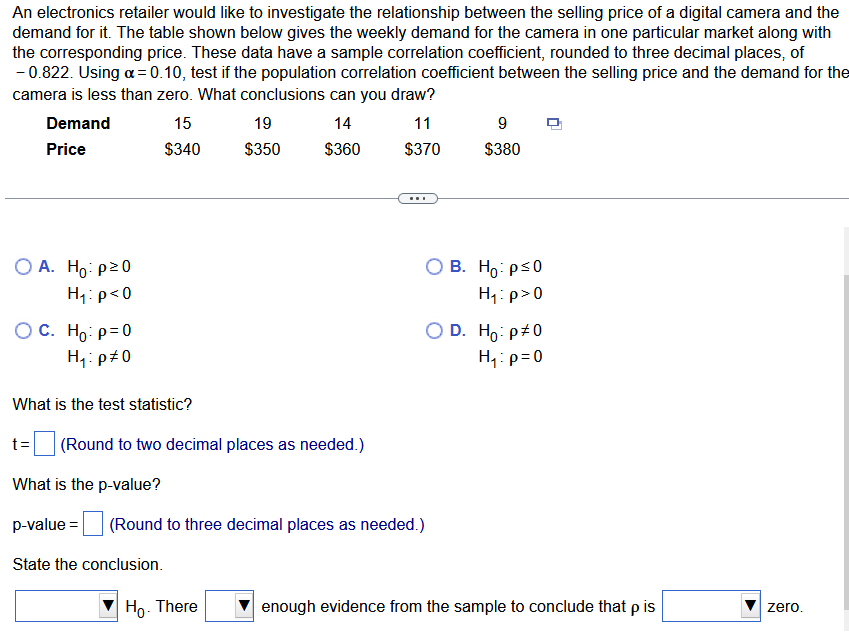Home /
Expert Answers /
Statistics and Probability /
an-electronics-retailer-would-like-to-investigate-the-relationship-between-the-selling-price-of-a-pa238
(Solved): An electronics retailer would like to investigate the relationship between the selling price of a ...
An electronics retailer would like to investigate the relationship between the selling price of a digital camera and the demand for it. The table shown below gives the weekly demand for the camera in one particular market along with the corresponding price. These data have a sample correlation coefficient, rounded to three decimal places, of \( -0.822 \). Using \( \alpha=0.10 \), test if the population correlation coefficient between the selling price and the demand for the camera is less than zero. What conclusions can you draw? A. \( \mathrm{H}_{0}: \rho \geq 0 \) B. \( \mathrm{H}_{0}: \rho \leq 0 \) \( \mathrm{H}_{1}: \rho<0 \) \( \mathrm{H}_{1}: \rho>0 \) C. \( \mathrm{H}_{0}: \rho=0 \) D. \( \mathrm{H}_{0}: \rho \neq 0 \) \( \mathrm{H}_{1}: \rho \neq 0 \) \( \mathrm{H}_{1}: \rho=0 \) What is the test statistic? \( t=\quad \) (Round to two decimal places as needed.) What is the p-value? p-value \( =( \) Round to three decimal places as needed. \( ) \) State the conclusion. \( \mathrm{H}_{0} \). There enough evidence from the sample to conclude that \( \rho \) is zero.
